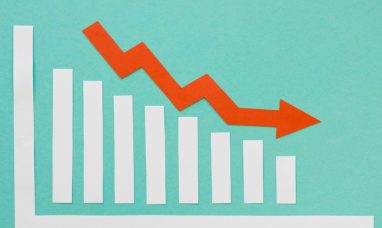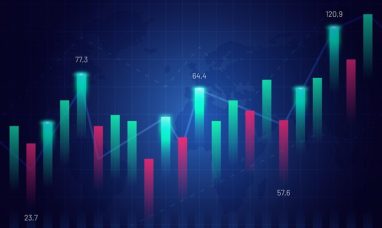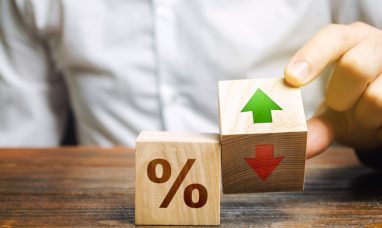U.S. wholesale inflation picked up in June, with prices rising by a larger-than-expected 2.6% from a year earlier. This increase, the sharpest since March 2023, indicates that some inflationary pressures remain elevated despite broader signs of easing inflation.
Breakdown of the Inflation Data
The Labor Department reported that the producer price index, which tracks inflation before it reaches consumers, rose 0.2% from May to June after being unchanged the previous month. Excluding volatile food and energy prices, core wholesale prices increased by 0.4% from May and 3% from June 2023.
The increase in wholesale inflation last month was driven primarily by a 0.6% rise in services prices, particularly higher profit margins for machinery and auto wholesalers. In contrast, the overall prices of goods fell by 0.5%, with gasoline prices tumbling 5.8% at the wholesale level and food prices also declining.
Implications for Consumer Inflation
The producer price index provides an early indication of where consumer inflation might be headed. Economists closely monitor the PPI because components like healthcare and financial services feed into the Federal Reserve’s preferred inflation gauge, the personal consumption expenditures index.
The wholesale figures come on the heels of a government report that consumer inflation cooled in June for the third consecutive month. Consumer prices fell by 0.1% from May to June, marking the first drop in overall inflation since May 2020, when the economy was heavily impacted by the pandemic.
Federal Reserve’s Response
These recent price figures suggest a continued slowdown in the inflation that surged three years ago as the economy rebounded from the pandemic recession. The Federal Reserve raised its benchmark interest rate 11 times in 2022 and 2023 to a 23-year high in an effort to curb inflation. While inflation has cooled from its four-decade high of 9.1%, the Fed is expected to begin cutting interest rates in September.
Bill Adams, chief economist at Comerica Bank, commented on the situation, stating, “The big picture is that inflation pressures have moderated over the last two years but are still a bit stronger than the Fed would like them to be. With the economy operating in low gear, the Fed thinks the right time to start cutting interest rates is close. But they are planning to cut gradually.”
Rate cuts by the Fed would likely lead to lower borrowing costs for mortgages, auto loans, credit cards, and business borrowing. Additionally, lower interest rates could boost stock prices, benefiting the broader economy.
U.S. wholesale inflation picked up in June, with prices rising by a larger-than-expected 2.6% from a year earlier. This increase, the sharpest since March 2023, indicates that some inflationary pressures remain elevated despite broader signs of easing inflation.
Breakdown of the Inflation Data
The Labor Department reported that the producer price index, which tracks inflation before it reaches consumers, rose 0.2% from May to June after being unchanged the previous month. Excluding volatile food and energy prices, core wholesale prices increased by 0.4% from May and 3% from June 2023.
The increase in wholesale inflation last month was driven primarily by a 0.6% rise in services prices, particularly higher profit margins for machinery and auto wholesalers. In contrast, the overall prices of goods fell by 0.5%, with gasoline prices tumbling 5.8% at the wholesale level and food prices also declining.
Implications for Consumer Inflation
The producer price index provides an early indication of where consumer inflation might be headed. Economists closely monitor the PPI because components like healthcare and financial services feed into the Federal Reserve’s preferred inflation gauge, the personal consumption expenditures index.
The wholesale figures come on the heels of a government report that consumer inflation cooled in June for the third consecutive month. Consumer prices fell by 0.1% from May to June, marking the first drop in overall inflation since May 2020, when the economy was heavily impacted by the pandemic.
Federal Reserve’s Response
These recent price figures suggest a continued slowdown in the inflation that surged three years ago as the economy rebounded from the pandemic recession. The Federal Reserve raised its benchmark interest rate 11 times in 2022 and 2023 to a 23-year high in an effort to curb inflation. While inflation has cooled from its four-decade high of 9.1%, the Fed is expected to begin cutting interest rates in September.
Bill Adams, chief economist at Comerica Bank, commented on the situation, stating, “The big picture is that inflation pressures have moderated over the last two years but are still a bit stronger than the Fed would like them to be. With the economy operating in low gear, the Fed thinks the right time to start cutting interest rates is close. But they are planning to cut gradually.”
Rate cuts by the Fed would likely lead to lower borrowing costs for mortgages, auto loans, credit cards, and business borrowing. Additionally, lower interest rates could boost stock prices, benefiting the broader economy.
Conclusion
The rise in U.S. wholesale inflation in June highlights that while overall inflationary pressures have moderated, they are still present and pose challenges to economic stability. The Federal Reserve’s anticipated rate cuts aim to address these issues, but the impact of higher costs for essential goods and services continues to be felt by consumers. As the economy navigates these complexities, monitoring inflation trends and adjusting policies accordingly will be crucial for sustaining economic growth and stability.
Featured Image: Freepik







